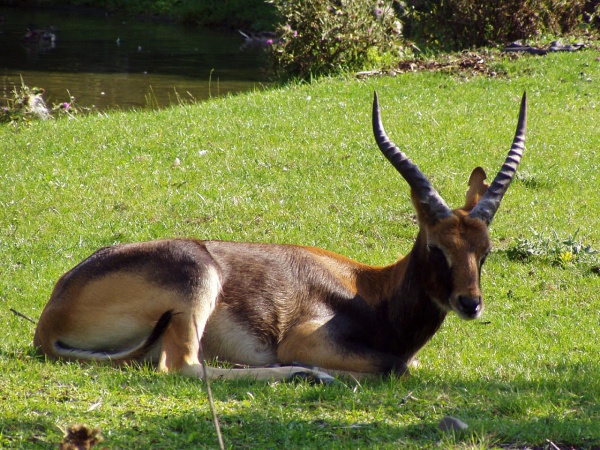Facts About Nile lechwe
The Nile lechwe, also known as Mrs. Gray's lechwe, is an endangered species of antelope that primarily inhabits the swamps and grasslands of South Sudan and Ethiopia. These animals exhibit significant sexual dimorphism, meaning males and females look quite different. Males are larger, with longer hair on their necks and impressive horns, while females are golden-brown and hornless.
Nile lechwe communicate using visual signals and vocalizations. They engage in behaviors such as defending their territories and performing mating rituals. As herbivores, their diet consists of succulent grasses, water plants, and other aquatic vegetation. They are adept at wading through shallow waters and swimming in deeper areas to find food.
These antelopes are most active during the early morning and late afternoon, a pattern known as being crepuscular. They typically form herds that include females, territorial males, and bachelor males.
Reproduction occurs year-round, with mating peaks from February to May. Males often fight for dominance, with the victorious male earning the opportunity to mate with the female. After a gestation period of seven to nine months, a single calf is born.
Conservation efforts are crucial for the Nile lechwe, as the species is classified as endangered by the International Union for Conservation of Nature (IUCN). They face threats such as habitat loss due to human activities, civil conflicts, and hunting.
In South Sudan, Nile lechwe populations are found in protected areas like the Zeraf Game Reserve, Fanyikang Game Reserve, and Shambe National Park. In Ethiopia, they can be found in Gambella National Park. Conservation strategies include both in situ (on-site) and ex situ (off-site) efforts to protect and preserve this unique species.

 Sudan
Sudan